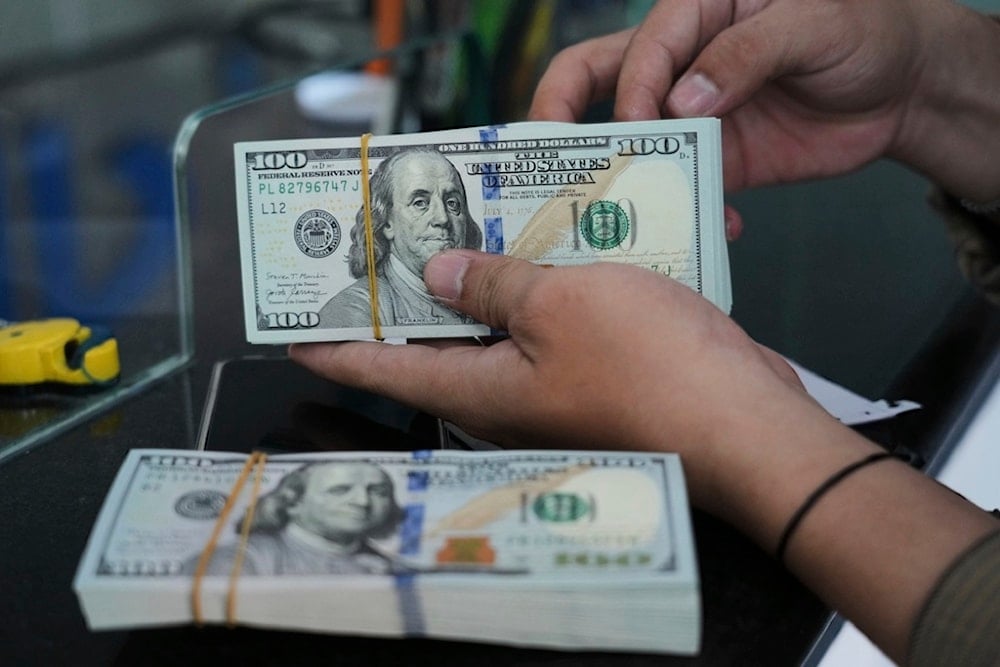USD to stay dominant despite de-dollarization: Expert to Al Mayadeen
Countries across the Global South are accelerating efforts to reduce reliance on the US dollar through local-currency trade, gold accumulation, and alternative payment systems, though none has yet produced a viable reserve alternative to US Treasuries.
-

An employee counts U.S. dollar notes at a money changer in Jakarta, Indonesia, Thursday, Aug. 7, 2025. (AP Photo/Tatan Syuflana)
American economist James K. Galbraith says that despite expanding efforts by major economies to settle trade in local currencies and diversify reserves, the dollar-based global monetary system is likely to endure due to the absence of a comparable alternative at scale.
Speaking in written comments shared with Al Mayadeen English, Galbraith noted that "the dollar-reserve system has a great deal of inertia, because there is no financial asset quite comparable, at scale, to US Treasury bonds and bills." He added that neither the eurozone nor China currently offers a substitute robust enough to challenge US financial depth. "European debt is the debt of individual countries, not that of Europe as a whole. And there isn't that much RMB debt out there. So crafting a stable alternative is difficult," he said.
Galbraith pointed to the previous US administration’s moves to freeze Russian reserves as a development that risked undermining confidence in the dollar, calling it "part of their general overestimation of the power of the dollar as a tool of coercion." He said he believes that outright seizure of Russian assets is now "off the table," which could help stabilize the system even as the US pursues aggressive tariff policies.
According to Galbraith, China’s gradual reduction of its dollar holdings in favor of commodities represents a strategic risk-management choice, though one that comes with costs. However, he cautioned against overstating the implications. "Moving trade to national currencies is relatively easy, especially if trade is reasonably balanced," he explained. "Moving away from a single liquid reserve is relatively hard, though one should never say never."
Galbraith added that the United States itself is constrained by the very system it dominates. "From a US perspective, the dollar reserve system is a bit of a trap: it underpins US purchasing power in the world, but erodes industrial capacity and associated human skills," he said.
His comments come amid a wave of de-dollarization initiatives led by BRICS members and several emerging economies, as well as record gold purchases by central banks seeking to reduce exposure to Western financial pressure. Despite the momentum, Galbraith’s assessment suggests that structural limitations continue to make a rapid monetary shift unlikely.
Shifting Reserves
Efforts to diversify away from the dollar have accelerated in the past decade as several countries seek protection from sanctions and politically driven financial restrictions. BRICS states have expanded local-currency settlements, while Russia and China now conduct most of their bilateral trade in rubles and yuan. Central banks from Asia, the Middle East, and Latin America have increased gold accumulation, and alternative payment systems, including China’s CIPS and Russia’s SPFS, have been promoted as partial substitutes for SWIFT.
Some BRICS members have floated the idea of a shared currency or a new unit of account, and regional mechanisms such as the Chiang Mai Initiative in East Asia aim to reduce reliance on IMF-backed support. However, none of these efforts has yet produced a reserve asset with the liquidity, scale, and legal stability of US Treasuries, a reality that continues to anchor dollar dominance despite growing geopolitical pressures.
Nonetheless, the dollar’s share of global reserves has edged lower, signaling that while no alternative has yet emerged, many states are quietly preparing for a more fragmented monetary landscape.
Read more: BRICS authority, influence in global affairs continually rising: Putin

 4 Min Read
4 Min Read








